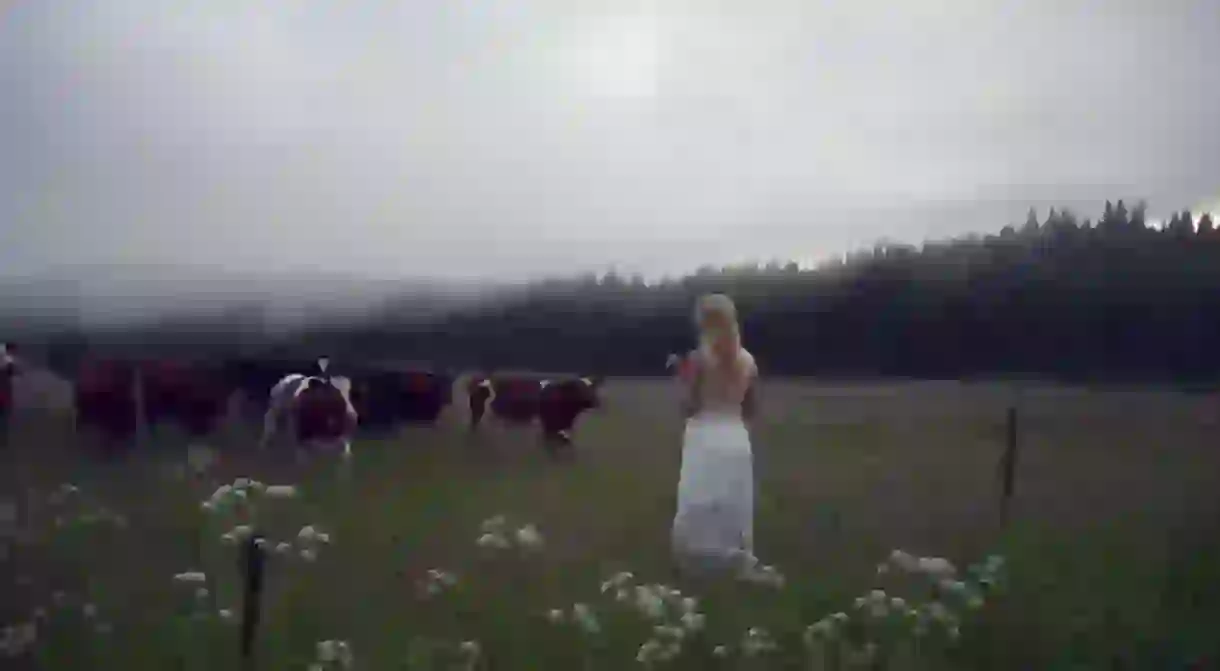Kulning: An Ancient Swedish Herding Call

A line of trees and a herd of cattle are visible through the mist. A woman, dressed in white, raises her voice in a haunting song. And the cows gather, crowding contentedly around her.
It might look like a scene from folk-horror film Midsommar (2019), but this is a real tradition, known as kulning. The woman in white is a Swedish artist called Jonna Jinton, and she’s helping lead its rebirth.

The return of an ancient art
Jinton first heard kulning when she was 12, on a school trip to a folk museum. She became fascinated by it, and when she was 21, left her studies in Gothenburg to head to Grundtjärn, the out-of-the-way farming village where her mother was born.
She practised the songs, which were used to bring in cattle from the high pastures, and when she posted some of them on social media, they attracted immediate interest. The technique also featured in Frozen (2013) and Frozen 2 (2019), so world domination can only be a step away.
What is kulning?
Kulning originated in rural Sweden and Norway. It’s a high-pitched way of singing that carries powerfully over distance and – thanks to its use of ‘blue’ half- and quarter-tones – sounds sorrowful and haunting.
It was used in medieval times, when villages would send their livestock to graze in spring pastures in the mountains. Women would accompany the animals, often for months on end, and would use the songs to call them in each night. Each village or family would have a different song, and improvisation led to new compositions. It’s likely there was an overlap between kulning and more typical folk music, with the calls a part of local culture and identity, and the songs may also have been used to warn of predators.
The songs’ use in modern farming is likely to be limited, but Jinton and other lovers of kulning believe its beauty connects listeners to something special. Listening to its eerie sounds ringing across the Swedish landscape, it’s hard to disagree.













